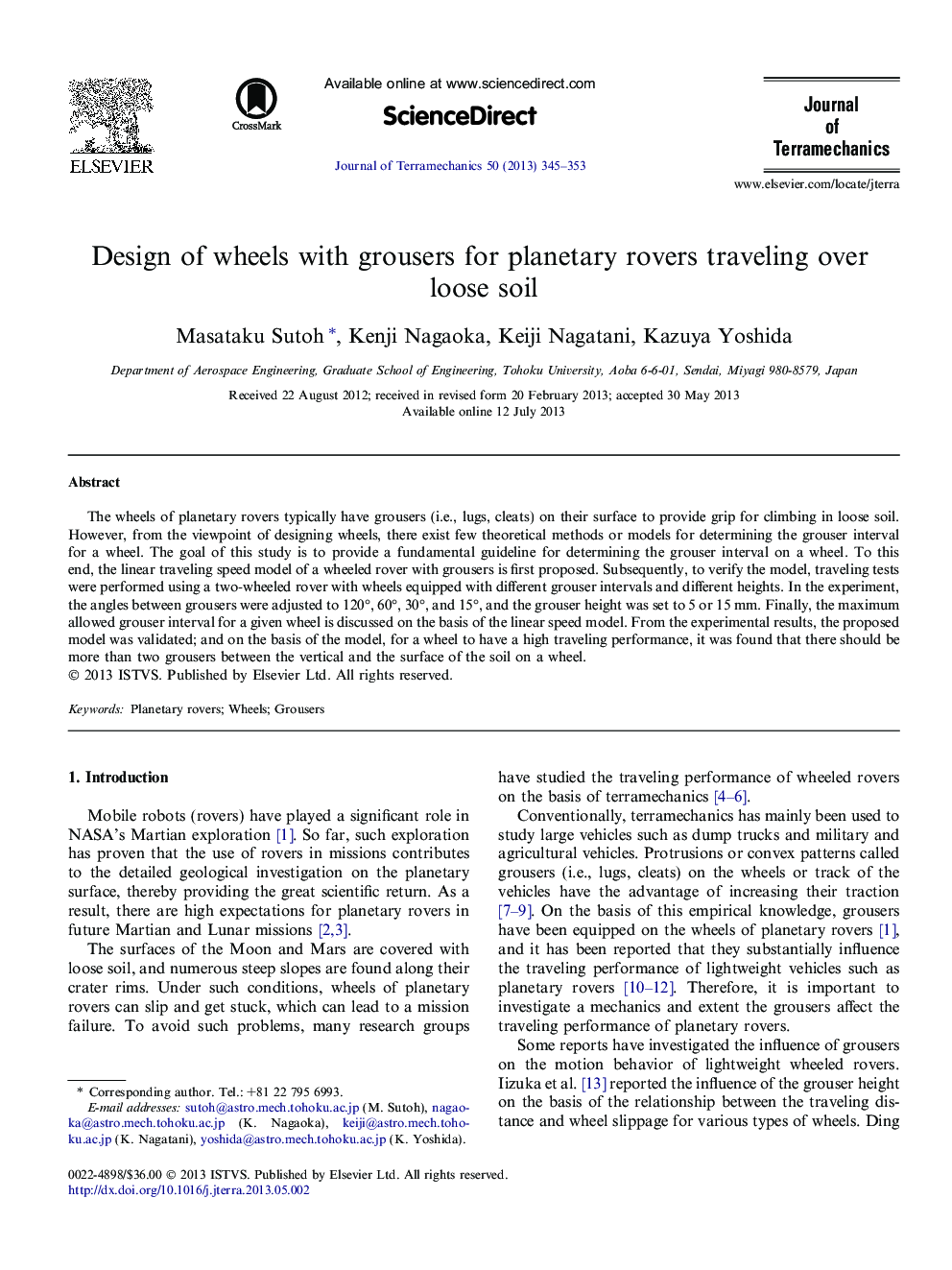| Article ID | Journal | Published Year | Pages | File Type |
|---|---|---|---|---|
| 801491 | Journal of Terramechanics | 2013 | 9 Pages |
•The linear traveling speed model of a wheeled rover with grousers is proposed.•The model is experimentally validated using wheels with various geometries.•This model provides a guideline for the minimum grouser count of a given wheel.
The wheels of planetary rovers typically have grousers (i.e., lugs, cleats) on their surface to provide grip for climbing in loose soil. However, from the viewpoint of designing wheels, there exist few theoretical methods or models for determining the grouser interval for a wheel. The goal of this study is to provide a fundamental guideline for determining the grouser interval on a wheel. To this end, the linear traveling speed model of a wheeled rover with grousers is first proposed. Subsequently, to verify the model, traveling tests were performed using a two-wheeled rover with wheels equipped with different grouser intervals and different heights. In the experiment, the angles between grousers were adjusted to 120°, 60°, 30°, and 15°, and the grouser height was set to 5 or 15 mm. Finally, the maximum allowed grouser interval for a given wheel is discussed on the basis of the linear speed model. From the experimental results, the proposed model was validated; and on the basis of the model, for a wheel to have a high traveling performance, it was found that there should be more than two grousers between the vertical and the surface of the soil on a wheel.
